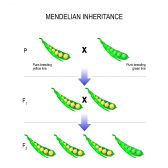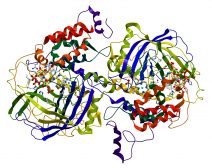Definition
noun, plural: Petri dishes
A circular dish made of glass or plastic and with a loose-fitting cover, used in culturing cells
Supplement
In cell and microbiological techniques, Petri dishes are one of the most common equipment in laboratories. They are round shallow transparent dishes made of glass or plastic. They come with a lid that rests loosely at the top and sides. The (borosilicate) glass types are made especially to withstand sterilization methods (e.g. by autoclaving) and for reuse. Those that are made of plastic or other synthetic materials are disposable. The newest ones have metal rings beneath to allow more efficient storage, preventing slipping and falling off when kept one on top of the other.1 The name comes from a German bacteriologist, J. R. Petri.
Petri dishes are used in the laboratory primarily for cell cultures. An agar is usually used as a culture medium for growing cells, such as microbial cells. The transparent feature of the dish is essential for observing the contents without lifting the cover. It also allows exposure of the content to light. to The looseness of the cover allow the content to allow air exchange by diffusion, thus, permitting air but preventing contamination of the contents by other microorganisms.2
Variant(s):
- Petrie dish
Synonym(s):
See also:
Reference(s):
1 Science Laboratory Petri Dishes and their Uses. Retrieved from http://radialmaster.com/science-lab-petri-dishes.php.
2 Petri Dishes. Retrieved from http://chemistry.about.com/od/chemistrylabexperiments/ig/Chemistry-Laboratory-Glassware/Petri-Dishes.-18-.htm.






